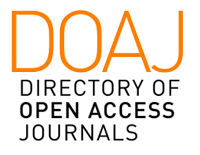[GW28-e0586]
Study on the pathological mechanisms of heart failure by integrative analysis of transcriptomics and proteomics
Jian Zhang1 Yong Wang 1 2 Weili Lin3 Ruixin Zhu4 Wei Wang1
1.Basic Medical College, Beijing University of Chinese Medicine, Beijing, China
2.School of Life Sciences, Beijing University of Chinese Medicine, Beijing, China
3.Key Lab of Computational Biology, CAS-MPG Partner Institute for Computational Biology, Shanghai Institutes for Biological Sciences, Chinese Academy of Sciences Shanghai, China
4.Department of Bioinformatics, School of Life Sciences and Technology, Tongji University, Shanghai, China
Objectives: Heart failure (HF) is the leading cause of morbidity and mortality worldwide. Elucidating the mechanisms of HF remains a significant challenge due to multidimensional alterations at molecular, cellular, tissue, and organ levels. Integrative analysis of multiple layers (transcriptome and proteome) of genetics information provides new insights into pathogenesis of HF for better understanding the molecular pathological mechanisms of HF.
Methods: Rat model of HF was induced by left anterior descending (LAD) artery ligation operations. At 28 days after surgery, cardiac functions were assessed by echocardiography. The pathological damage of myocardial tissues was assessed by HE and Masson’s trichrome staining. The expression profiles of mRNAs and proteins were detected by high-throughput digital gene expression (DGE) sequencing and two-dimensional electrophoresis coupled mass spectrometric (MS) proteomic analysis in the border zone of infarct myocardial tissue. Multiple co-inertia analysis (MCIA) were performed to integrate transcriptome and proteome data and detect key genes of HF on both mRNA and protein levels. Subsequently, quantitative real-time PCR (qRT-PCR) and western blot (WB) were applied to validate the expression of key genes and proteins.
Results: Echocardiography showed that ejection fraction (EF) decreased obviously and left ventricular end-diastolic dimension (LVEDd) and left ventricular end-systolic dimension (LVEDs) increased significantly in HF. Furthermore, HE and Masson’s trichrome stain also demonstrated pathological changes of myocardial injury. Transcriptomic analysis indicated that pattern of gene expression was substantially altered in HF, yielding 1925 differentially expressed genes (FDR<0.05), including 202 key genes. Proteomic analysis revealed differentially expressed 32 proteins (FDR<0.05), including 7 key proteins. Total 17 pathways were significantly enriched included the differential genes and proteins. Interestingly, the key genes Acca2, Ndufa10, Nnt, Ckmt2, and the key protein Acot1, considered as the key factors related to energy metabolism disorder especially the lipid utilization disorder in HF, were remarkably down-regulated. These changes were further confirmed by both qRT-PCR and WB. Moreover, both omics result and qRT-PCR validation result also demonstrated that the key genes Mmp17, Sfrp2 and Mant4 which were related to extracellular matrix (ECM) in HF, were significantlyup-regulated. Interestingly, the key protein Tubb4, a cytoskeletal protein which was previously considered as a conserved gene, was decreased in HF.
Conclusions: The combined analysis of transcriptomics and proteomics provides new strategy about screening key potential target genes and proteins for heart failure. The results suggested that the disorders of energy metabolism, ECM and cytoskeletal protein played critical roles during the development of HF. The identified key genes and proteins can provide better understanding of pathological mechanism as well as novel therapeutic targets for HF.














